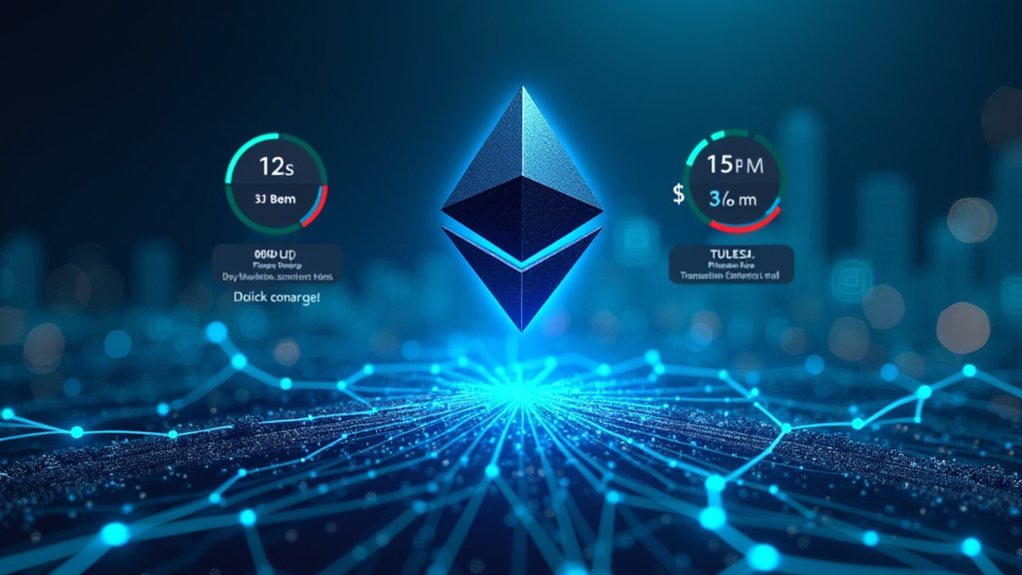While most crypto projects scramble to match Ethereum’s dominance, essential Buterin isn’t resting on his laurels. The Ethereum founder has revealed plans to dramatically reduce block finalization time from a sluggish 15 minutes to just 12 seconds. Talk about an upgrade. This “single-slot finality” would put Ethereum in the same speed league as Solana and Algorand—blockchains that have long mocked Ethereum’s turtle-like confirmation times.
Buterin aims to turbocharge Ethereum with 12-second finality, challenging Solana’s speed dominance in one ambitious leap.
The technical solutions already exist. Implementing them? That’s the hard part. But Buterin seems determined to make it happen, because waiting 15 minutes for transaction finality in 2023 is about as convenient as dial-up internet.
Buterin’s not stopping there. He’s tackling the centralization problem head-on by simplifying staking processes and hardware requirements. Right now, the barriers to entry for validators are higher than a Silicon Valley rent payment. Lower them, and suddenly more regular folks can participate. Revolutionary concept, huh?
The gas fee structure is getting an overhaul too. EIP-7706 proposes a separate market for calldata fees, which could make Layer 2 transactions considerably cheaper. The newly introduced third fee market for calldata aims to optimize network efficiency and reduce transaction costs. Economics 101 with Professor Vitalik.
Perhaps most urgent is fixing Layer 2 security issues. Unlike Layer 1 problems that can be addressed through forks, L2 bugs can lead to permanent financial losses. Not exactly the kind of “hodl forever” investors had in mind. This push for improved L2 security aligns with how solutions like Polygon MATIC process up to 65,000 transactions per second while maintaining connection to Ethereum’s main chain.
Buterin wants to integrate advanced L1 features into L2 systems to prevent these catastrophic outcomes. The staking mechanism is also due for simplification. Less complexity means more users, which means better security. It’s not rocket science, but it’s close.
All these changes aim to strengthen the entire Ethereum ecosystem from the ground up. L1 remains the secure foundation while L2 solutions handle scaling. Because in Buterin’s vision, you shouldn’t have to choose between security and speed. You deserve both. And he’s working overtime to deliver.





